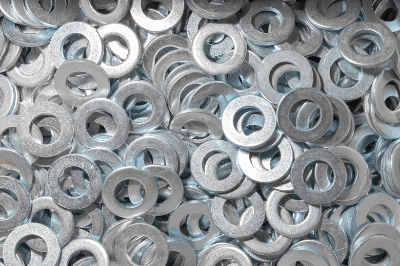What Is Shim Tape?

Shim tape is a thin metal tape widely used to adjust the position and fine-tune the height of equipment by inserting it between the gaps.
Shim means “filler.” For example, when each part is assembled, each part is within tolerance, but when the parts are assembled, the overall position may not fit together due to accumulated tolerances.
In such cases, fine adjustment of the thickness of the parts that do not match can be done with a shim tape to align the parts. Also, when the plane of a component set in a device is tilted, the tilted plane can be fine-tuned by inserting a shim tape of the required thickness.
Uses of Shim Tapes
Shim tape is often used for height adjustment in dies and for positioning workpieces on machine tools. In the case of height adjustment in dies, fine adjustment of height is made by inserting shim tape equivalent to the thickness of the adjustment amount between the mounting surfaces of each plate when they are combined, thereby improving machining accuracy.
In the case of a machine tool, the shim tape compensates for the inclination of the mounting surface for machining the workpiece (= workpiece to be machined) and enables parallelization. With the use of shim tape, machining of the workpiece with a uniform flat surface can be expected.
It can also be used to compensate for tilting and gaps in equipment, thereby reducing rattling and noise during operation caused by gaps.
Principle of Shim Tapes
The principle of shim tape is not to be used as a tape for bonding objects together, but rather as a thin metallic tape that can be cut to any length and inserted into the desired adjustment point as an individual piece of thin metal plate. By inserting the cut tape at the desired location, it is possible to adjust the machine, mold, or flat surface before machining.
The length (height) of the gap can also be measured by inserting the shim tape into the gap. Before machining a workpiece, the workpiece is set up. If the plane consisting of the table and the workpiece is tilted, the hole will be tilted when machining a hole.
To adjust the plane, shim tape is placed between the table and the workpiece on the side of the workpiece that is less flat, the plane is measured again to check the inclination, and if there is no problem, machining is performed.
Other Information About Shim Tape
1. Examples of Shim Tape Specifications
Various specifications of shim tape are available.
Material of Shim Tape
- SK material (carbon steel)
- SUS304 (Stainless steel)
Usually these two types are used, but brass is sometimes used by some processors.
Shim Tape Standards
General shim tape thicknesses range from 0.005 mm to 2.0 mm, allowing the use of a thickness that best suits the purpose. Also, the standard tape width is 12.7 mm (special widths are also available), and tape lengths of 1 m and longer can be purchased.
2. Difference Between Shims, Liners and Spacers
The terms “shim” and “liner” are used for similar purposes, and there is really no clear definition. In some cases, however, shims are often used for thinner materials and liners for thicker materials, with shims being used for materials less than 1 mm and liners for materials greater than 1 mm.
The main use of both is as fillers to replenish gaps. Spacers, on the other hand, are plate-shaped fillers with a slightly different meaning. Spacers, on the other hand, are board-shaped fillers with a slightly different meaning: they are used to fill gaps. In other words, the height and position adjustment purposes are the same as for shims and liners, but spacers are often not used for tilt adjustment purposes.
3. Precautions When Using Shim Tape
Shim tape is often used for height and position adjustment purposes, but too much use of this tape may result in the inability to reproduce the same condition. It is difficult to exceed the target height and tilt accuracy of the original machine tool or mold in terms of process capability, and if the shim tape used is lost or misplaced when the equipment is disassembled, there is a risk that the original condition cannot be restored.
It is important to consider the target accuracy of molds, machine tools, and assembled parts carefully, and where the adjustment allowance is to be made before use.